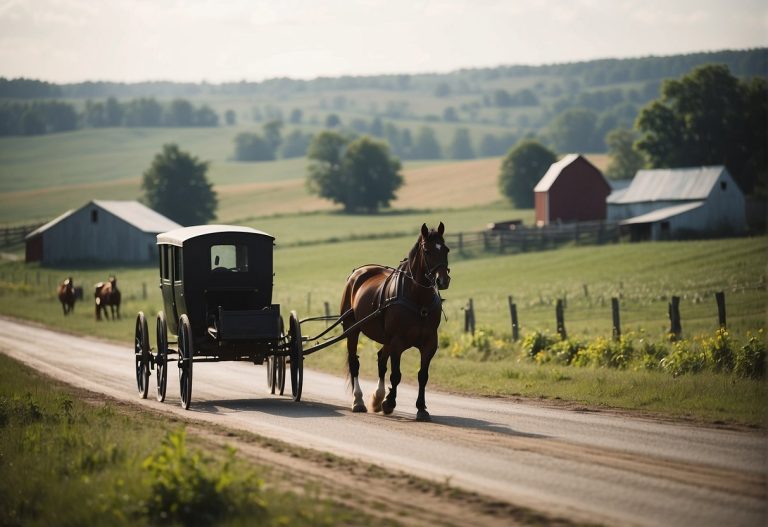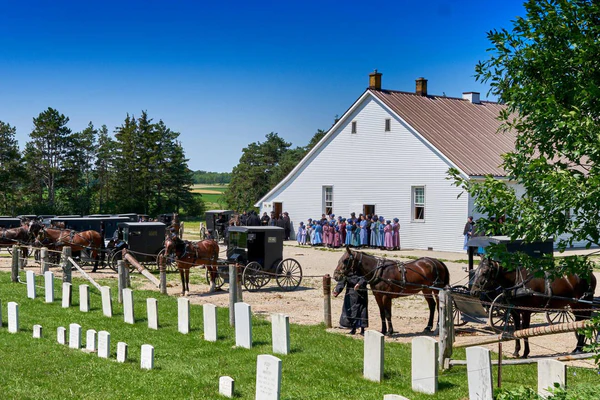Historic Amish Communities Still Thriving Today
Amish communities have preserved their culture, traditions, and way of life for centuries. While many migrated to America in the 18th century, some historic settlements remain active, maintaining strong faith, family bonds, and simple living. Exploring these communities provides insight into how the Amish have successfully balanced tradition with modern pressures.
Lancaster County, Pennsylvania
Lancaster County is one of the oldest and most well-known Amish settlements in America. Established in the early 1700s, it remains a hub for farming, craftsmanship, and family-centered living.
The region’s rolling farmland and tight-knit communities allow the Amish to maintain horse-drawn transportation, plain dress, and communal farming practices. Visitors can experience Amish markets, handmade goods, and traditional foods while observing a lifestyle rooted in centuries of heritage.
Holmes County, Ohio
Holmes County hosts the largest Amish population in the United States. Settled in the early 1800s, the area has grown into a thriving network of farms, schools, and communities.
Amish families in Holmes County continue to focus on agriculture, woodworking, and artisanal crafts. Community events, barn raisings, and religious gatherings reflect strong social bonds, emphasizing cooperation, faith, and shared responsibility.
Elkhart and LaGrange Counties, Indiana
Elkhart and LaGrange Counties in Indiana are home to historic Amish settlements dating back to the mid-19th century. These communities have maintained traditions despite being located near urban areas.
The Amish here balance rural living with careful interaction with surrounding society. They continue to farm, operate small businesses, and preserve language, crafts, and religious practices, demonstrating resilience and adaptability.
Geauga County, Ohio
Geauga County is another longstanding Amish settlement established in the 1800s. Families here have preserved traditional farming methods, handmade goods, and community-centered education.
Visitors can witness Amish life through farm stands, craft shops, and local events. The community exemplifies how historic settlements maintain their identity while contributing to the local economy and culture.
Elkhart County, Indiana
Elkhart County is known for its Amish craftsmanship and agricultural expertise. Settled in the 1800s, the community has retained its commitment to simple living, family values, and religious devotion.
Amish artisans in the area continue woodworking, quilting, and other traditional crafts, providing a link between historical practices and modern appreciation for handmade goods.
Preserving Language and Culture
Historic Amish communities have maintained cultural traditions such as speaking Pennsylvania Dutch, observing faith-centered routines, and teaching children in one-room schools. Language, crafts, and farming practices connect current generations to their European roots and early American experiences.
These communities ensure that values like humility, cooperation, and faith remain central to everyday life. Their resilience in preserving culture offers lessons for modern society about intentional living and heritage preservation.
Community and Cooperation
One reason these historic settlements thrive is strong community cooperation. Families assist each other with large tasks, such as barn raisings and harvests. Social events, religious gatherings, and shared responsibilities strengthen bonds, ensuring continuity of tradition.
This emphasis on mutual support allows Amish communities to adapt to challenges while maintaining their identity. Generational knowledge passes seamlessly from elders to younger members, sustaining long-standing practices.

Lessons for Visitors
Historic Amish communities offer travelers a chance to observe a way of life rooted in simplicity, faith, and family. Visiting markets, craft shops, and farms provides insights into a culture that values sustainability, hands-on work, and intentional living. Respectful observation allows outsiders to appreciate the enduring strength of these communities without disrupting their traditions.
Conclusion
Historic Amish communities, from Lancaster County to Holmes County and beyond, continue to thrive today. These settlements preserve traditions, crafts, language, and faith-centered living that have been passed down for generations. By maintaining strong family bonds, cooperative practices, and a commitment to simplicity, the Amish demonstrate resilience and continuity. Observing these communities offers a rare glimpse into a culture that has successfully preserved its identity while adapting to the modern world.



